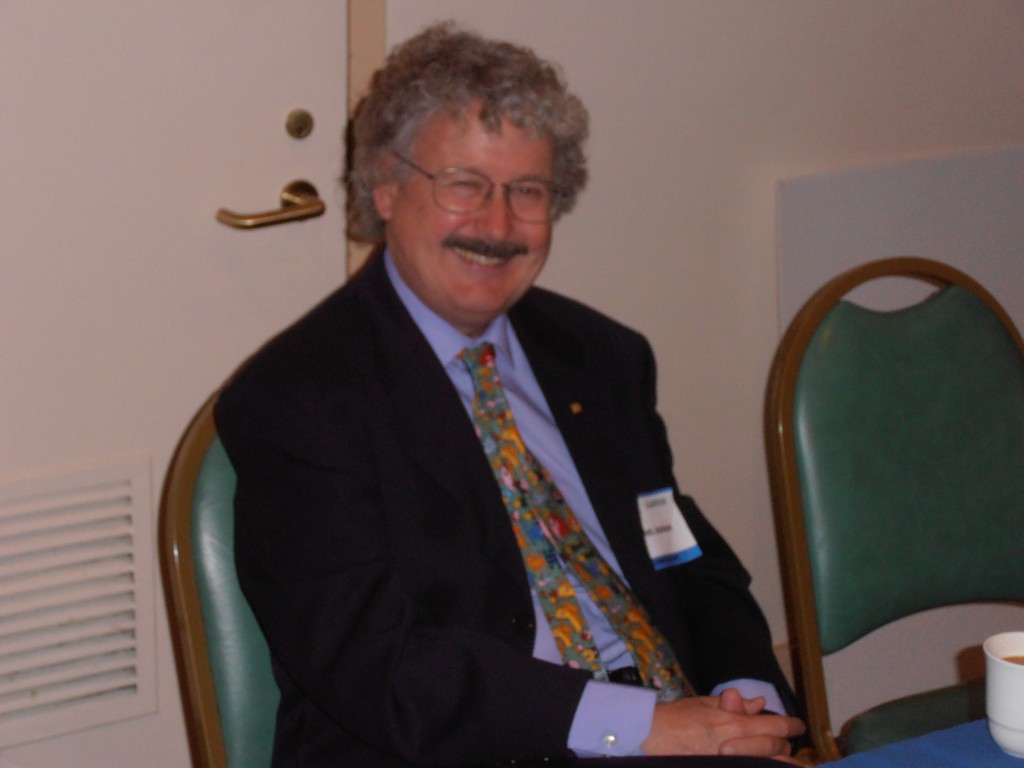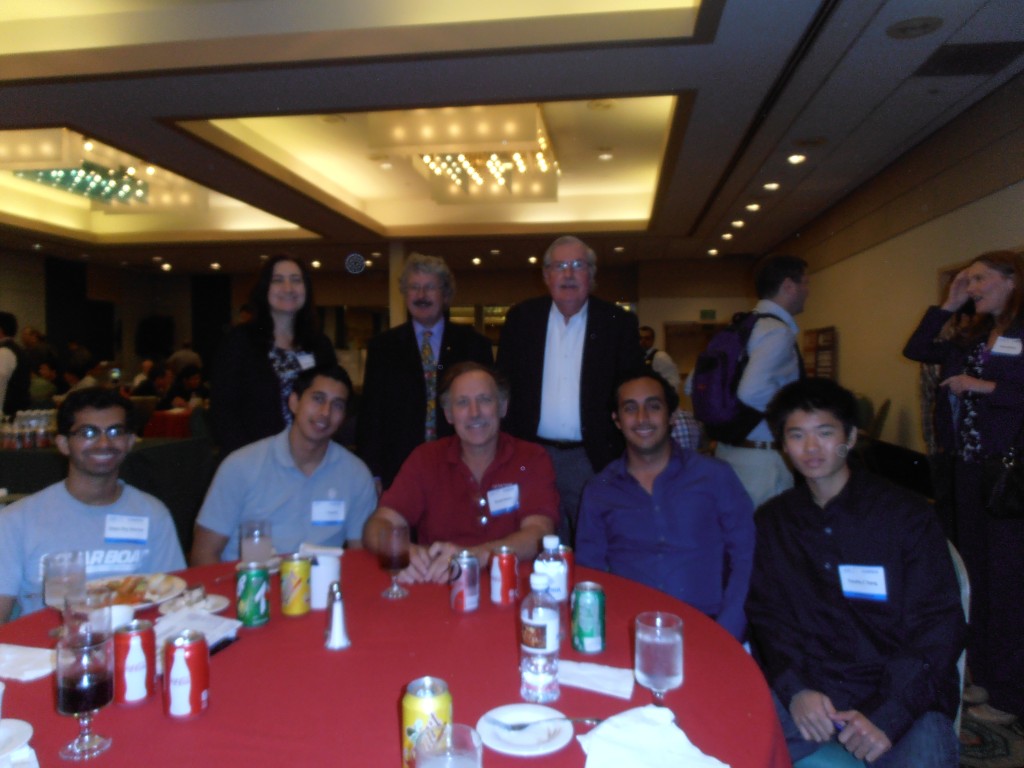Posts Tagged by near-field antenna measurements
IEEE Student Day at Antenna Measurements Technology Day Successful 10/13/2015
| October 21, 2015 | Posted by Frank Gomez under CN, COMSOC, CS, EDCAS, MTT/APS |
Comments off
|
AMTA Student Day 2015 in Long Beach, CA was a day to remember. We had approximately 10 students from our IEEE Foothill section schools Cal Poly Pomona and UC Riverside. There were also students from Cal State Northridge, UC Irvine and UCLA. AMTA provided two great speakers for the students. […]
IEEE Foothill Members Visit CLASTECH on October 25, 2013
| October 28, 2013 | Posted by Frank Gomez under CN, COMSOC, EDCAS, MTT/APS |
Comments off
|
Over 150 engineers and scientists converged on the Hacienda Hotel near LAX on Friday, October 25, 2013 for an all-day session on the advances in electromagnetics; namely Microwave and Antenna state-of-the-art topics. The event organizers from the IEEE Los Angeles Coastal Section once again recruited an outstanding list of accomplished […]
Over 150 engineers and scientists converged on the Hacienda Hotel near LAX on Friday, October 25, 2013 for an all-day session on the advances in electromagnetics; namely Microwave and Antenna state-of-the-art topics. The event organizers from the IEEE Los Angeles Coastal Section once again recruited an outstanding list of accomplished speakers to cover these subjects. Two dual simultaneous tracks were held; one in Microwave, the other in Antennas. The hard part for every attendee was to make a choice for the individual session to attend.
A Session on Graphene electronics (Jeong-sun Moon,HRL Laboratories, Malibu, CA) looked at the unique band structure exhibited from this two-dimensional form of carbon. One factor that makes this material so interesting is the potential extremely large values of electron mobility (up to 200K cm2/V*s, limited by phonon scattering). This is a factor of 1000 more than that available for Si (Silicon) or Ge (Germanium). So, the question then is, can a MOSFET be made with Graphene? Our speaker described the process of making a trial MOSFET with a Graphene substrate above a layer of Si / SiO2. Starting with SiC and heating it, it becomes an artistic judgment problem to grow a single layer of Graphene. Measuremenst of electron density, phase noise, and frequency of operation up to gain cutoff(up to 37Ghz) were reported. Progress towards making such a MOSFET was reported, but much effort is ahead. Yes, this could be a very high speed device, if a very small on /off state resistance change could be tolerated. So, those of us interested in high speed communication at microwave frequency will be tracking future reports on Graphene MOSFET trials.
Now, where are we in the development of Reflectarray Antennas (RA)? The concept is to determine a method of adjusting the phase of a reflected signal to get the wavefront in the form that you can use. This means that one investigates the size and shape of patches on the reflector surface, loading the patches with stubs for path length corrections, orientation of these patches on the reflector surface, along with constantly being mindful on mutual coupling effects (the bane of every antenna designer). To evaluate these effect, a unit cell model with a single reflector was developed and analyzed (with HFSS and like computational programs). This was complemented by using a vector network analyzer for measurements. The output is an “S-Curve”, which displays the phase change per distance (size) of the selected patch/ set of patches. So, now the designer of a Reflectarray antenna has some design tools. Current academic research is looking at a Cassegrainian system with a RA subreflector for axial defocusing. Interestingly, the Infrared community is now looking at RA, but looking at closely spaced elements, closer that the standard half-wavelength spacing. Today’s presentation by Professor Yahya Rahmat-Samii of UCLA was excellent and comprehensive.
The issue of the need for more signal processing to accommodate Digital Pre-Distortion for Power Amplifiers (PA) has come from the wireless community. The wireless community, in designing their transmission base stations, are highly dependent on effective PAs. These EEs have to contend with peak power to average power rations, strict bandwidth allotments, spectral spacings, higher order inter-modulation products, as well as efficiency issues with their PA designs. Even Class F Doherty PA designs will only approach the needed 70% (or better desired) efficiency for certain frequencies within the transmit band. These point to on-going engineering efforts for pre-transmission chains with wider bandwidth detection, separate ADC channels, I/Q detection, and feedback loops. The real time calculated pre-distortion attempts to create the IM modulation products in anti-phase for applying to modulation directly into the PA. This is an interesting ongoing effort (presented today by John Wood, MAXIM Integrated Products), clearly important to all in the wireless community: LTE, WCDMA, etc.
A final technology look today was at Near-Field antenna measurements made with a customized measurement setup mechanism. This device (Greg Hindman, NearField Systems, Inc.) was constructed to take rapid measurements in both transmit /receive mode (T/R). Consider the two standard rotation planes for taking antenna measurements. This device and setup has stepper motors rotating (the on-device antenna port) in angle Phi at 30 degrees per second, over a +/- 180 degree range; and rotating in angle Theta at 2 degrees per second, over a range of +/- 95 degrees. The aim is to take measurements at half-wavelength intervals. Pulsed R/T testing is used, since a non-reciprocal antenna (AUT) requires both T/R excitations. Probe position corrections give RMS accuracies on the order of 0.003 inch and 0.003 Degrees. Our speaker gave an excellent overview of the design goals, and the measured results for the Near-Field instrumentation.
Our IEEE Foothill Section was well represented at this event. We are still awaiting some written evaluation and commentary from the IEEE students whose attendance we sponsored. One student noted that he was encouraged to take on a specific RF related project for his senior thesis following some input from the AWR company representative at the Exhibitor display here today. The prospect of future employment in the RF-Wireless community is a strong motivation for our IEEE student. We also received updates on microwave calibration connectors at the Maury Microwave exhibit.
One footnote: Yes, it is a long tiresome three hour plus drive back from LAX after this CLASTECH meeting on the infamous 91 freeway to Riverside County. The quality of the meeting with such a large number of IEEE electromagnetic engineers present does make it worthwhile, nevertheless.


